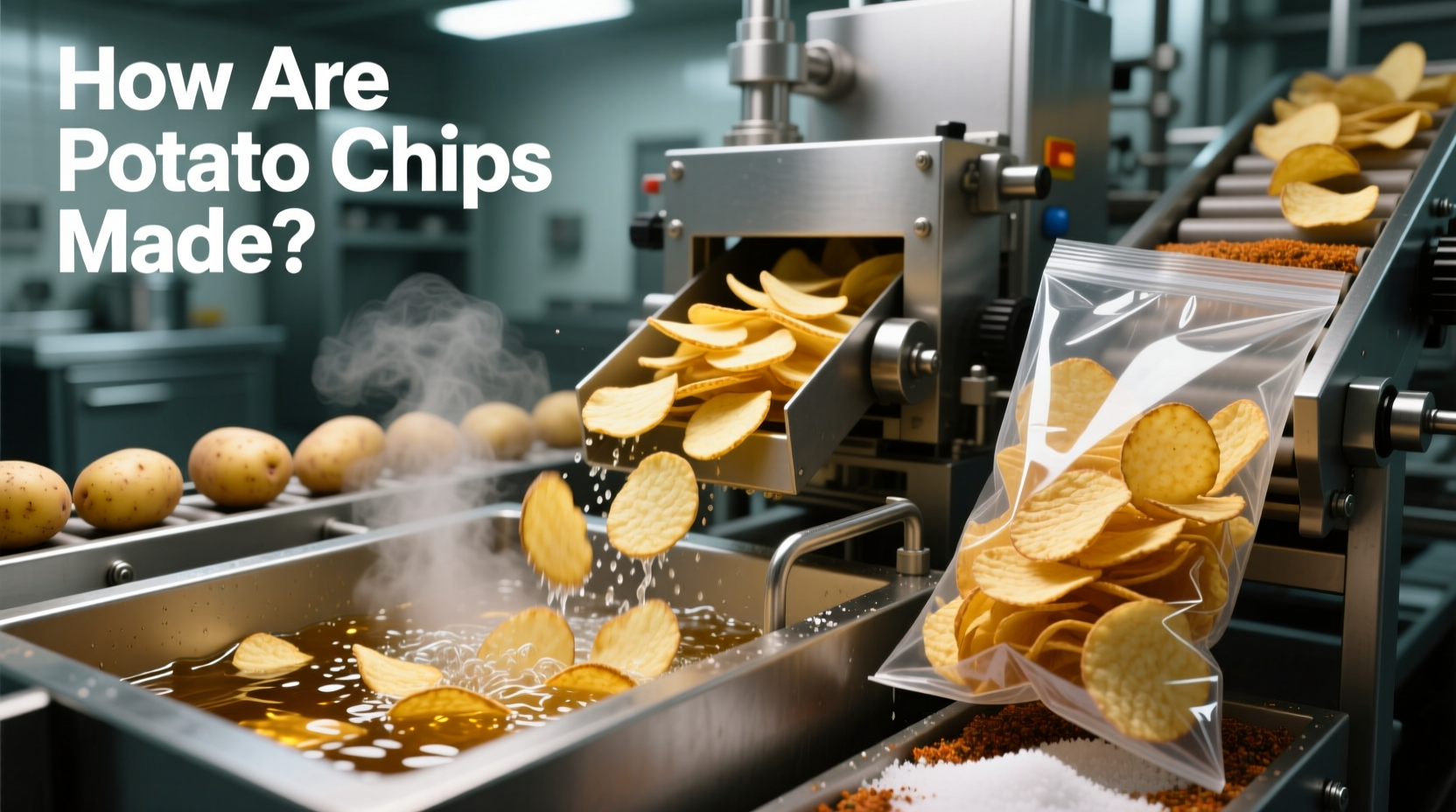The Journey of a Potato Chip: From Field to Bag
Ever wondered how that perfectly crispy potato chip in your bag came to be? The transformation from humble tuber to beloved snack involves a fascinating blend of agricultural science, precise engineering, and culinary expertise. Understanding how commercial potato chips are made reveals why mass-produced chips maintain consistent quality and flavor that's difficult to replicate at home.
Historical Timeline: The Evolution of Potato Chip Production
Potato chips weren't always the mass-produced snack we know today. Their journey reflects significant technological advancements:
- 1853: Chef George Crum in Saratoga Springs, New York, accidentally creates the first potato chips after a customer complained his French fries were too thick
- 1920s: Laura Scudder begins packaging chips in wax paper bags in California, solving the freshness problem
- 1950s: Continuous frying systems replace batch processing, enabling mass production
- 1960s: Computer-controlled systems introduce precise temperature and timing for consistent quality
- Present day: Advanced optical sorting and AI-powered quality control ensure only perfect chips reach consumers
Raw Material Selection: Why Not All Potatoes Make Good Chips
Commercial chip manufacturers don't use just any potatoes. The selection process is remarkably precise:
Specialized varieties like Russet Burbank, Shepody, and Atlantic dominate commercial production due to their ideal characteristics. According to the US Department of Agriculture, these varieties contain the perfect balance of 18-22% solids (mostly starch) needed for proper crisping during frying. Potatoes with lower solid content absorb too much oil, creating greasy chips, while those with higher solids can become overly brittle.

The Commercial Manufacturing Process: Step by Step
Modern potato chip production follows a carefully controlled sequence that transforms raw potatoes into the consistent product we recognize:
1. Washing and Inspection
Upon arrival at the factory, potatoes undergo thorough washing in rotating drum scrubbers to remove dirt and debris. Advanced optical sorters then scan each potato, rejecting those with defects, green spots, or improper shape. This industrial potato chip manufacturing process ensures only premium potatoes proceed to the next stage.
2. Peeling Techniques
Unlike home preparation, commercial facilities use one of three peeling methods:
- Steam peeling: Most common method where potatoes are exposed to high-pressure steam for 30-90 seconds, followed by mechanical rubbing
- Lye peeling: Used for irregularly shaped potatoes, involving brief immersion in sodium hydroxide solution
- Abrasive peeling: Mechanical removal using rotating brushes
3. Precision Slicing
This critical step determines chip thickness and uniformity. High-speed rotary cutters slice potatoes at rates up to 3,000 per minute, with thickness controlled to within 0.004 inches (0.1 mm). The exact potato chip production method varies by brand—some prefer thicker kettle-style chips while others opt for ultra-thin varieties.
4. Rinsing and Drying
After slicing, potatoes undergo a water bath to remove excess surface starch that would cause sticking during frying. Centrifugal dryers then spin the slices at high speed to remove surface moisture. This step is crucial for achieving the perfect texture in how potato chips are manufactured commercially.
| Production Method | Temperature Range | Frying Time | Texture Characteristics |
|---|---|---|---|
| Continuous frying | 350-375°F (177-191°C) | 2-4 minutes | Thin, uniform, consistent |
| Kettle cooking | 325-350°F (163-177°C) | 4-7 minutes | Thicker, irregular, artisanal |
| Air frying (alternative) | N/A | 10-15 minutes | Less oily, slightly chewier |
5. The Frying Process: Science of Crispiness
Frying transforms raw potato slices into crispy chips through precise temperature control. Most commercial operations use continuous fryers where slices move through heated oil on conveyor belts. The oil temperature (typically 350-375°F or 177-191°C) causes rapid moisture evaporation while starches gelatinize and proteins denature.
The scientific process of making potato chips involves the Maillard reaction (browning) and caramelization, creating the characteristic golden color and complex flavors. Oil selection matters—most manufacturers use refined sunflower, canola, or corn oil for their high smoke points and neutral flavors.
6. Seasoning Application
Immediately after frying while still warm and slightly oily, chips receive their seasoning. Precision drum tumblers ensure even coating. For salted varieties, a fine salt mist is applied. Flavored chips receive dry seasoning blends through computer-controlled systems that maintain exact ratios. This potato chip seasoning technique ensures consistent flavor in every bite.
7. Quality Control: The Final Check
Before packaging, chips undergo rigorous quality checks:
- Optical scanners detect discoloration or irregular shapes
- Moisture analyzers verify proper drying
- Thickness gauges ensure uniformity
- Human inspectors perform spot checks for flavor and texture
According to FDA food safety guidelines, manufacturers must maintain strict controls to prevent acrylamide formation (a potential carcinogen that can develop when starchy foods are cooked at high temperatures).
Commercial vs. Homemade: Key Differences
While you can make potato chips at home, commercial production achieves results difficult to replicate in a kitchen:
- Consistency: Industrial processes maintain exact thickness, frying time, and temperature
- Oil management: Commercial fryers continuously filter and replenish oil
- Seasoning precision: Computer-controlled systems apply exact seasoning amounts
- Moisture control: Specialized drying systems prevent sogginess
Environmental Considerations in Modern Production
Today's potato chip manufacturing process incorporates sustainability practices:
- Potato peels and imperfect slices are converted to animal feed
- Used frying oil is often recycled into biodiesel
- Water recycling systems minimize waste in washing processes
- Energy-efficient fryers reduce overall power consumption
How to Make Better Chips at Home
While you can't perfectly replicate commercial methods, these tips improve homemade chips:
- Use Russet potatoes for their ideal starch content
- Soak slices in cold water for 30 minutes to remove excess starch
- Dry slices thoroughly before frying
- Maintain consistent oil temperature (350°F/177°C)
- Season immediately after frying while chips are still oily











 浙公网安备
33010002000092号
浙公网安备
33010002000092号 浙B2-20120091-4
浙B2-20120091-4